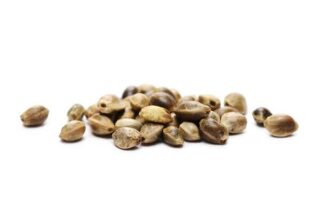Exploring the Green Frontier: Understanding THC Marijuana
In the realm of botanical wonders, few plants have spurred as much fascination and debate as cannabis. Among its myriad compounds, tetrahydrocannabinol, commonly known as THC, stands out as the most renowned and perhaps controversial. As society’s perception of marijuana evolves, so too does our understanding of THC—its effects, medicinal benefits, and role in culture. This article delves into the intricacies of THC marijuana, illuminating its properties, applications, and the science behind this potent compound. Whether you’re a curious newcomer or a seasoned enthusiast, join us on a journey through the green frontier, where tradition meets modern innovation and the conversation around cannabis continues to flourish.
Table of Contents
- Understanding the Varieties of THC Marijuana and Their Effects
- Navigating the Legality of THC Marijuana in Different Regions
- Exploring Consumption Methods: Finding What Works Best for You
- Maximizing Benefits: Dosage Guidelines and Safety Considerations
- Q&A
- In Summary
Understanding the Varieties of THC Marijuana and Their Effects
The world of THC marijuana is an intricate tapestry woven from a diverse array of strains, each boasting unique profiles and effects. Ranging from the euphoric to the sedative, the experience can greatly vary based on the strain’s genetic makeup and chemical constituents. The primary varieties include:
- Indica: Typically known for its calming effects, Indica strains are often chosen for relaxation and stress relief.
- Sativa: These strains tend to produce energetic and uplifting effects, ideal for social situations or creative endeavors.
- Hybrid: A blend of both, hybrids can offer a balanced experience, catering to specific needs and preferences.
Understanding the nuances between these varieties can empower users to make informed decisions. It’s also essential to recognize that individual responses can differ based on several factors, including body chemistry and tolerance levels. Here’s a simple overview of popular strains to consider:
| Strain Type | Common Effects |
|---|---|
| Indica | Relaxation, Pain Relief, Sleep Aid |
| Sativa | Euphoria, Energy Boost, Creativity |
| Hybrid | Balanced Mood, Versatile Effects |
Navigating the Legality of THC Marijuana in Different Regions
As the world increasingly embraces cannabis, understanding the legal landscape surrounding THC marijuana is crucial for users and entrepreneurs alike. Various regions have adopted different stances on its legality, creating a complex patchwork of regulations. In some areas, recreational use is fully legalized, while others maintain strict prohibitions. Here’s an overview of these varying perspectives based on geographical lines:
| Region | Legal Status |
|---|---|
| North America | Many states have legalized both medical and recreational use, but federal laws still classify it as a Schedule I substance. |
| Europe | Countries vary widely; some fully legalize it while others only allow medical usage. |
| Asia | Most countries maintain strict prohibitions, with a few exceptions for medical use. |
| South America | Legalization trends are emerging, but regulations are still evolving. |
Navigating this intricate legality involves more than just understanding laws; it also requires staying informed about shifts in public perception and regulation. As lawmakers respond to advocacy and research, the legal frameworks can change rapidly. Therefore, it’s essential for individuals to keep abreast of updates in their specific regions. Here are some tips for staying informed:
- Follow local news outlets that cover cannabis legislation.
- Connect with community organizations that advocate for cannabis rights.
- Subscribe to newsletters from legal firms specializing in cannabis law.
Exploring Consumption Methods: Finding What Works Best for You
In the quest for enhanced experiences with THC marijuana, understanding the various consumption methods is crucial. Each method offers distinct effects and onset times, making it vital to explore options that align with personal preferences and lifestyle. Some popular consumption methods include:
- Smoking: Traditional and immediate, smoking provides quick effects but can be harsh on the lungs.
- Vaping: A smoother alternative, vaping heats cannabis without combustion, delivering potent effects with fewer irritants.
- Edibles: These tasty treats provide long-lasting effects but can take time to kick in, requiring patience.
- Tinctures: Fast-acting and discreet, tinctures allow for precise dosing through sublingual applications.
- Topicals: Perfect for localized relief, these products can be infused with THC, providing benefits without psychoactive effects.
Choosing the right method may require experimentation, as each individual’s body chemistry and preferences will influence effectiveness. For those new to THC, starting with lower doses and gradually increasing can help in finding the optimal experience. Below is a simple comparison table to help visualize the pros and cons of each method:
| Consumption Method | Onset Time | Duration | Ease of Use |
|---|---|---|---|
| Smoking | Immediate | 1-3 hours | Moderate |
| Vaping | Immediate | 2-4 hours | Easy |
| Edibles | 30 mins – 2 hours | 4-8 hours | Easy |
| Tinctures | 15-45 mins | 2-6 hours | Very easy |
| Topicals | Variable | 3-5 hours | Very easy |
Maximizing Benefits: Dosage Guidelines and Safety Considerations
When exploring THC marijuana, it is essential to understand the role of dosage in maximizing its therapeutic benefits. Individual responses to THC can vary widely, influenced by factors such as body weight, tolerance, and the specific condition being addressed. Beginners are often advised to start with lower dosages, typically around 5-10 mg of THC, to gauge how their body reacts. This cautious approach allows users to gradually increase their dosage as needed. In general, consider the following guidelines:
- Assess Personal Tolerance: Each person metabolizes THC differently.
- Start Low, Go Slow: Incrementally increase dosage based on personal comfort.
- Consult with Professionals: Seek advice from healthcare providers familiar with cannabis.
While THC marijuana can offer numerous benefits, safety considerations play a critical role in ensuring a positive experience. Factors such as underlying health conditions, potential drug interactions, and the medium of consumption (e.g., smoking, edibles, oils) should be taken into account. Users should remain informed about legal regulations in their region and potential side effects, which can include anxiety, paranoia, or impaired coordination. To enhance safety protocols, consider maintaining a standardized dosage log, documenting the amount consumed, effects felt, and any adverse reactions.
| Consumption Method | Onset Time | Duration |
|---|---|---|
| Smoking/Vaping | Immediate | 1-3 hours |
| Edibles | 30 minutes – 2 hours | 4-6 hours |
| Tinctures | 15-45 minutes | 2-4 hours |
Q&A
Q&A: Understanding THC Marijuana
Q1: What is THC, and how does it relate to marijuana?
A: THC, or tetrahydrocannabinol, is the primary psychoactive compound found in marijuana. It binds to cannabinoid receptors in the brain, leading to the “high” most commonly associated with cannabis use. While THC is a key component, marijuana also contains other cannabinoids, terpenes, and flavonoids that contribute to its effects and flavor.
Q2: How does THC affect the human body?
A: When consumed, THC interacts with the endocannabinoid system, which plays a role in regulating various physiological processes such as mood, appetite, and pain sensation. Users might experience increased appetite, relaxation, altered perception, and euphoria, but these effects can vary widely based on individual tolerance and the strain of marijuana.
Q3: What are the potential benefits of THC marijuana?
A: THC marijuana has been studied for its potential therapeutic effects, including pain relief, reduction of nausea, and stimulation of appetite, particularly in patients undergoing chemotherapy or those with certain chronic conditions. Additionally, some users report its effects on anxiety and stress relief, although results can be subjective.
Q4: Are there any risks associated with using THC marijuana?
A: Yes, while many users enjoy the benefits, THC can also cause negative side effects. These may include anxiety, paranoia, impaired memory, and decreased motor coordination. Long-term or heavy use can lead to dependence and withdrawal symptoms. It’s essential for users to be aware of their own limits and the context in which they use THC products.
Q5: How is THC marijuana consumed?
A: THC marijuana can be consumed in various forms, including smoking, vaporizing, edibles, tinctures, and oils. Each method offers a different onset time and intensity of effects. For example, smoking provides rapid effects, while edibles can take longer to kick in but may result in a more prolonged experience.
Q6: Is THC marijuana legal everywhere?
A: The legality of THC marijuana varies widely across the globe. Some countries and states have fully legalized it for recreational use, while others permit it only for medical purposes, and some still classify it as an illegal substance. It’s crucial to check local laws to understand the regulations that apply to your area.
Q7: Can you explain the difference between THC and CBD?
A: THC and CBD (cannabidiol) are both cannabinoids, but they have different effects. THC is psychoactive and creates a high, while CBD is non-psychoactive and is often sought out for its potential therapeutic properties without the intoxicating effects. Many users choose products that contain a balance of both for a more holistic experience.
Q8: What should beginners know before trying THC marijuana?
A: For those new to THC marijuana, starting with a low dose is advisable to gauge how it affects you. Understanding the strain and its THC content can help in predicting the experience. Additionally, opt for a familiar, safe environment, especially if you are unsure of how THC will affect you. Always remember to consult a healthcare professional if you have any underlying health concerns.
Q9: Are there any advancements in research related to THC?
A: Indeed! Research into THC and other cannabinoids is expanding rapidly, with studies exploring their effects on conditions like chronic pain, PTSD, and neurodegenerative diseases. Scientists are also looking into the entourage effect, the concept that the various compounds in marijuana work together to enhance effects and benefits, promising even more nuanced understanding of THC’s role in health and medicine.
Q10: How can someone choose the right THC product for themselves?
A: Choosing the right THC product often depends on personal preferences and desired effects. Consider factors such as the THC/CBD ratio, method of consumption, and strain type (indica, sativa, or hybrid). Consulting with knowledgeable staff at dispensaries can provide valuable insights tailored to your needs, ensuring a more personalized experience.
In Summary
the exploration of THC marijuana reveals a multifaceted world where science, culture, and personal experience intertwine. As more individuals seek to understand the potential benefits and drawbacks of THC, it is essential to approach the topic with an open mind and a commitment to informed dialogue. Whether used for medical relief, recreational enjoyment, or simply as a subject of curiosity, THC marijuana continues to shape discussions around health, legality, and social norms. As we move forward, embracing both research and personal narratives will empower us to navigate this evolving landscape with greater knowledge and respect. In this way, we can appreciate THC marijuana not just as a substance, but as a catalyst for conversation, connection, and change.

